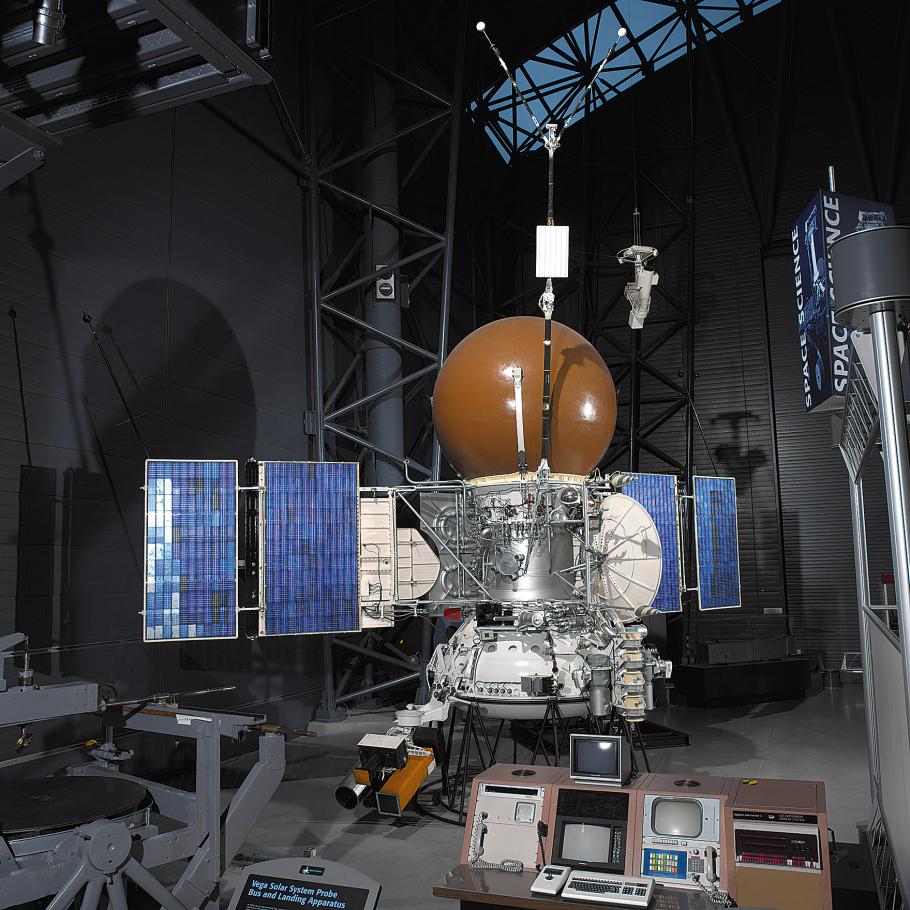In 1984 the Soviet Union launched the Vega 1 and Vega 2 spacecraft, which flew by Venus, dispatched scientific instruments into its atmosphere, then went on to pass through the tail of Comet Halley and transmit data on it back to Earth. The multinational mission involved scientists and instruments from Bulgaria, Czechoslovakia, France, East and West Germany, Hungary, Poland, the United States, and the Soviet Union, and marked a new era of international cooperation for the Soviet space program.
French scientists designed Vega's main Venus experiment, a balloon carrying scientific instruments that was released into the atmosphere to measure cloud activity. Vega also released a Soviet-designed lander to investigate the planet's surface. This bus, for carrying the atmospheric experiment, and the landing apparatus are engineering models donated to the Museum by J. Buckner Hightower and Gregory W. Schnurr and Lavochkin Scientific Production Association.
Display Status
This object is on display in Space Science at the Steven F. Udvar-Hazy Center in Chantilly, VA.
Object Details
Country of Origin
USSR
Type
SPACECRAFT-Uncrewed
Manufacturer
Lavochkin Scientific Production Association
Dimensions
Overall: 16 ft. 15/16 in. tall x 30 ft. 2 3/16 in. wide, 8818.4 lb. (490 x 920cm, 4000kg)
Materials
Atmosphere Balloon - Rubberized Fabric
Balloon Package - Metals and Plastic Film, Some Tape and Wires
Landing Package - Painted Fiberglass
Orbital Bus - Various Painted Metals and Chrome, Wires
Alternate Name
Vega Solar System Probe Bus and Landing Apparatus
Inventory Number
A19960108000
Credit Line
Gift of H. Buckner Hightower and Gregory W. Schnurr.
Data Source
National Air and Space Museum
Restrictions & Rights
Usage conditions apply
For more information, visit the Smithsonians Terms of Use.

